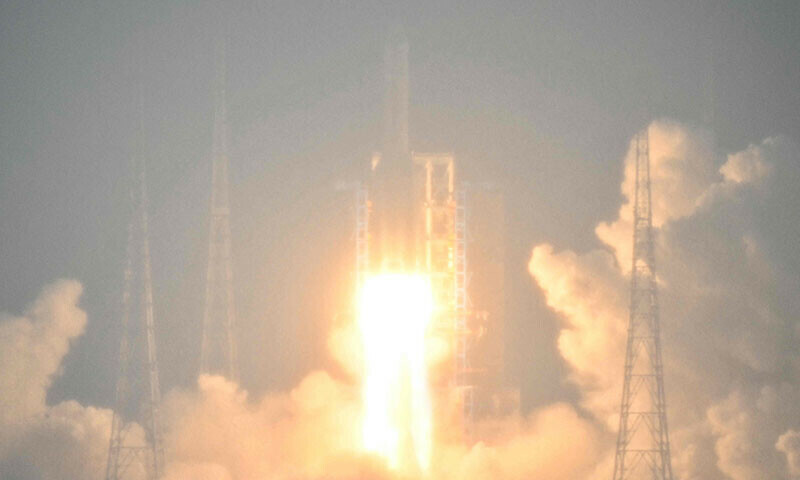In a historic first, a Pakistani satellite will orbit the moon as part of China’s historic Chang’e-6 lunar mission, which was launched from Hainan, China, on Friday.
The mission, which aims to explore the moon’s “dark side”, will employ lunar research payloads from multiple countries, including Pakistan’s iCube Qamar satellite.
The Institute of Space Technology (IST) on Tuesday said Pakistan’s “historic” lunar module iCube-Q, which was designed by IST in collaboration with China’s Shanghai University (SJTU) and Pakistan’s national space agency Suparco, will be aboard Chang’e-6.
The mission, dubbed Chang’e, is named after the mythical Chinese moon goddess.
Chang’e-6 aims to collect around two kilograms of lunar samples from the far side of the Moon and bring them back to Earth for analysis. Chinese state news agency Xinhua hailed it as “the first endeavour of its kind in the history of human lunar exploration”.
“Chang’e-6 will collect samples from the far side of the Moon for the first time,” Ge Ping, vice director of China’s Lunar Exploration and Space Engineering Center, told journalists.
China will send a robotic spacecraft in the coming days on a round trip to the moon’s far side in the first of three technically demanding missions that will pave the way for an inaugural Chinese crewed landing and a base on the lunar south pole.
The probe is set to land in the immense South Pole-Aitken Basin, one of the largest known impact craters in the solar system. Once there, it will scoop up lunar soil and rocks, and carry out other experiments in the landing zone.
With no direct line of sight with the Earth, Chang’e-6 must rely on a recently deployed relay satellite orbiting the moon during its 53-day mission, including a never-before-attempted ascent from the moon’s “hidden” side on its return journey home.
On Chang’e-6, China is carrying payloads from France, Italy, Sweden and Pakistan, while Chang’e-7 will bear payloads from Russia, Switzerland and Thailand when it launches in 2026.
NASA is banned by US law from any collaboration, direct or indirect, with China.
Under the separate NASA-led Artemis programme, US astronauts will land near the south pole in 2026 — the first humans on the moon since 1972.
iCube Qamar
The ICUBE-Q orbiter carries two optical cameras to image the lunar surface. The module is a cube satellite or CubeSat — miniature satellites typically characterised by their small size and standardised cubic design.
Due to their compact size and relatively low cost compared to traditional satellites, CubeSats offered opportunities for universities, research institutions and commercial entities to participate in space missions and gather valuable data for scientific advancement and innovation.
Beijing’s “space dream”
Plans for China’s “space dream” have been put into overdrive under President Xi Jinping.
Beijing has invested heavily in its space programme over the last decade, targeting a string of ambitious undertakings to close the gap with the two traditional space powers — the United States and Russia.
The country has notched several notable achievements, including building a space station called Tiangong, or “heavenly palace”, to which it sent a fresh crew of three astronauts last month.
Beijing has landed robotic rovers on Mars and the moon and made China the third country to independently put humans in orbit. China aims to send a crewed mission to the moon by 2030, with further plans to build a base on the lunar surface.
More to follow.
Pakistan
#Pakistani #lunar #payload #launches #aboard #Chinese #lunar #mission #Pakistan
